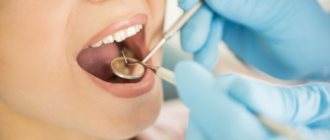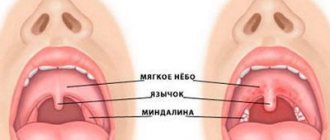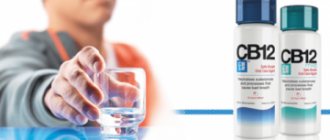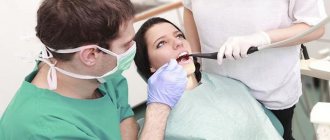Miramistin is a substance with an antimicrobial effect. This is an antiseptic that has found application in various fields, including in the treatment of intimate diseases. It is prescribed for the treatment of chlamydia and syphilis, for candidiasis of the genital organs, as well as for disinfection of the genital tract after childbirth.
Composition and principle of action
The drug contains benzyldimethyl[3-(myristoylamino)propyl]ammonium chloride monohydrate. This chemical compound has an antiseptic effect. It is effective against:
- staphylococci;
- streptococci;
- pseudomonas;
- Klebsiella;
- coli.
Miramistin is also used to destroy pathogenic fungi, viruses (including HIV), and pathogens of sexually transmitted infections. This antiseptic has a complex effect. Its functions include:
- elimination of inflammatory processes;
- preventing wound infections;
- stimulation of regeneration processes;
- absorption of purulent secretions.
Miramistin is a local drug. It is not absorbed into the blood and does not have a systemic effect on the body. Consequently, the drug has virtually no restrictions and extremely rarely provokes side effects.
Forms of release of the drug
Miramistin is a clear, colorless liquid that forms foam when shaken. It contains 0.01% of the active ingredient and purified water. The product is packaged in plastic bottles of various sizes - from 50 to 500 ml. For ease of use in the intimate area, the package includes:
- gynecological attachment;
- urological applicator;
- spray nozzle.
The nozzles ensure the most convenient and hygienic use of the product.
When an inflammatory process forms in the ear canal, drops are used that have an anesthetic and anti-inflammatory effect. The most popular remedies are considered to be Lorotox or Otipax, but there are common analogues with a low price and high quality. Read more in the article: “Which is better Lorotox or Otipax.”
Indications for use in the intimate area
Miramistin is a universal antiseptic that is prescribed for the following intimate diseases:
- gonorrhea;
- chlamydia;
- trichomoniasis;
- syphilis;
- genital herpes;
- candidiasis;
- vulvovaginitis;
- endometritis;
- postpartum injuries with suppuration;
- postpartum infections.
Miramistin is used not only in the treatment of sexually transmitted infections, but also as a means of preventing STDs after unprotected sex.
Amiksin, Ingavirin and Nobazit are included in the group of antiviral agents, but their composition and operating principle are different. This means that each drug has its own characteristics, advantages and disadvantages. Read more in the article: “Which is better amiksin, ingavirin or nobasit.”
About Medar
Now we will talk about our medical institution. Our medical center Medar has long been known both in Kazakhstan and abroad. We chose our beloved capital, Astana, as our location. How are we different from others, and what type of services do we provide? On our website you can find many articles on various medical topics.
We bring knowledge and health to people. From our articles you can learn about how various types of ultrasound scanning are done, what products are used to treat ailments in various fields of medicine. We are talking not only about well-known and widely used pharmacology, but also about less common folk methods.
Our doctors have received many awards and prizes, which is why Medar has outstanding treatment methods.
The prices in our clinic will pleasantly surprise you.
Instructions for use in the intimate area
Miramistin is applied directly to the genital area. Do this according to the instructions.
- The bottle is removed from the packaging. It is not necessary to shake the medicine.
- A suitable nozzle or applicator is installed on the packaging.
- The medicinal solution is applied to the affected area by pressing the nozzle.
Men need to use a urological applicator to inject the solution into the urethra. Women treat the urethral area and vagina. Additionally, you may need to spray an antiseptic in the anus area and on the inner thighs. This treatment mechanism will protect against sexually transmitted infections.
Miramistin alone is not enough to treat STDs. The antiseptic will play the role of an auxiliary element of therapy.
For chlamydia, gonorrhea and other genital infections, antibiotics (Klacid, Clindamycin, Eithromycin) or fluoroquinolones (Ofloxacin, Pefloxacin) are mandatory. Additionally, you may need to take vitamins and probiotics.
Antibacterial effect of the drug
The instructions for use of Miramistin clearly indicate that it is a disinfectant for external and internal intimate procedures. It destroys both gram-positive and gram-negative bacteria, and also affects aerobes and anaerobes. The medicine is not only a powerful antiseptic, but also a fungicide.
Miramistin has an active effect even on microorganisms in the intimate zone that have acquired resistance to other antibacterial medications.
Prevention of the intimate area with Miramistin provides enormous opportunities, since the drug has a very wide spectrum of action on pathogenic microflora. It is most widely used in situations of preventing the consequences of casual sexual intercourse or in connection with the rupture of a condom. Therefore, in gynecology, such a remedy is prescribed quite often, especially in the treatment of thrush.
Miramistin is extremely active against many bacteria that affect the intimate area:
- Aspergillus;
- Candida albicans;
- Candida tropicalis;
- Chlamydia species;
- Epidermophyton floccosum;
- Malassezia furfur;
- Microsporum canis;
- Neisseria gonorrhoeae;
- Rhodotorula rubra;
- Treponema species;
- Trichophyton rubrum;
- Trichophyton violacent;
- Trichophyton verrucosum and others.
A wide spectrum of action makes Miramistin for the intimate area a truly indispensable drug. It completely destroys the infection, has regenerating properties and has a wound healing effect.
Miramistin for candidiasis
Thrush, or candidiasis, is a fungal infection of the genital organs, accompanied by the formation of a white coating, curdled discharge and severe itching. For treatment, effective antimycotic drugs are usually prescribed in the form of suppositories for women and creams for men. The use of Miramistin will also be useful. There are several options for using an antiseptic.
- External treatment of the genital organs
. The perineal area is thoroughly irrigated with a medicinal solution using a spray nozzle. To enhance the effect, an antiseptic is injected into the vagina. - Douching
. A small rubber syringe can be used to administer the medication into the vagina. The antiseptic is taken in pure form or diluted with water in a 1:1 ratio. - Washing with solution
. Miramistin in this case will replace ordinary water. The use of detergents is not required.
Treatment of thrush using Miramistin will take 5-7 days. It is important not to stop processing, even if improvement occurs faster. Untimely completion of therapy will provoke a new wave of development of fungal infection and make the pathogenic microorganism more resistant to the antiseptic.
Douching with an antiseptic
An antiseptic can also be used for douching. Is it worth doing this procedure before you visit a gynecologist? Definitely not. In this case, the doctor will not be able to conduct a full examination if you clean the vagina of bacteria.
In this case, making a correct diagnosis will be extremely difficult. For douching you will need a douche bulb, or an ordinary Esmarch mug. Rubber tubes or a syringe must be thoroughly disinfected with alcohol, and then rinsed with boiled water.
The tips of the Esmarch mug are usually boiled. You must be sure that the medical instruments are completely sterile.
This procedure must be carried out extremely carefully.
Use after caesarean section
Miramistin has found wide application in obstetrics and gynecology. In particular, this antiseptic is used to treat sutures after a caesarean section. The solution is used according to the following algorithm.
- The bandage is removed from the wound.
- The surface of the skin is pre-treated with hydrogen peroxide. At the same time, the reaction of the wound is monitored. Blistering and hissing are signs of incomplete healing. This is a normal reaction in the first days after suturing. An alarming sign will be purulent discharge from the wound.
- The skin is dried after treatment with peroxide.
- Miramistin is applied. It is better to do this with a sprayer. There is no need to worry about the dosage. The medicine is absolutely safe.
After treatment is completed, a new sterile gauze bandage is applied to the wound. Treatments with Miramistin continue until the sutures are completely healed and the skin is restored.
Side effects and contraindications
There are no special contraindications for therapy with Miramistin; douching with it is not recommended only in case of personal intolerance.
Miramistin does not cause any adverse reactions and does not irritate the mucous membranes. In isolated cases, a tingling sensation may appear - this is normal.
It is not advisable to use the medicine when visiting a doctor, since douching will destroy the flora present, both normal and pathogenic, which will make it difficult to study the smear taken for analysis, which is always indicated during a gynecological examination.
It is better not to use this solution on the days of menstrual flow, due to the weakening of its therapeutic effect during this period. An excess amount of constantly leaking blood will complicate the antiseptic effect on the microflora.
It is not recommended to use Miramistin for douching during menopause. At this stage of life, due to a peculiar hormonal change in a woman’s body, dryness of the vaginal mucosa is observed. And this will cause discomfort when using this solution and may aggravate the situation.
Use after childbirth
Miramistin will also be useful after natural childbirth. A disinfectant is needed, as this can cause tissue damage. Typically, wounds and abrasions are localized on the walls of the vagina, labia, and cervix. Particular attention is paid to treatments if there were perineal ruptures during childbirth or the woman in labor had an episiotomy.
Treatment of the genitals with an antiseptic begins strictly after hygiene procedures.
The simplest treatment option is to irrigate the genitals using a spray bottle. After natural childbirth, douching with Miramistin solution or inserting sterile gauze swabs soaked in a disinfectant into the vagina is also allowed.
This will speed up the healing of existing wounds, prevent inflammatory processes and destroy pathogenic microorganisms.
How to use Miramistin for intimate hygiene
For intimate hygiene, it is recommended to use Miramistin solution. It is added to a bowl of water for washing. You can also moisten a napkin in the solution and wipe the external genitalia with it. The procedure must be carried out daily. After performing hygiene procedures, a woman is recommended to refrain from urinating for several hours.
To disinfect the external genitalia, you can use a drug that is produced in the form of a spray. With the help of this product, pathogenic bacteria are effectively combated, which is explained by the presence of antiseptic properties. The spray must be sprayed onto the external genitalia after hygiene procedures.
Analogues of Miramistin
Miramistin is not the only antiseptic used in the genital area. The comparison table will help you choose an analogue of Miramistin for intimate hygiene. It contains popular and effective remedies. It is impossible to name the single best antiseptic for intimate hygiene. Each of them has its own characteristics, disadvantages and advantages.
| Product name | Mode of application | Advantages | Flaws |
| Chlorhexidine | The solution is used for washing and douching. You can soak a sterile gauze pad with it and treat the skin and mucous membranes with it. | Inexpensive, effective and safe product. Does not cause side effects | There are no special attachments like Miramistin. May cause dryness and painful urination. Cannot be combined with other antiseptics |
| Hydrogen peroxide | The product is applied to a gauze pad or cotton pad. They treat the skin and mucous membranes | It is inexpensive and available in all pharmacies. The product is ready for use. | During long-term storage, it decomposes and loses its properties. Cannot be combined with chlorhexidine |
| Chamomile | Two filter bags are poured with boiling water (0.5 l) and left for 2-3 hours. The resulting solution is used for washing, douching, and sitz baths. | Quickly relieves itching. Normalizes pH levels, relieves pain and discomfort. It's inexpensive | You need to prepare the decoction yourself. |
| Calendula | 50 g of calendula flowers are poured into two glasses of water. The broth is boiled for 10 minutes, cooled, and filtered. The finished product is used for washing | It has a complex effect - heals wounds, suppresses inflammation, relieves itching and burning. Helps destroy pathogenic microorganisms | May cause an allergic reaction. You need to prepare the decoction yourself. Efficiency is lower than that of ready-made pharmaceutical antiseptics |
| Epigen Intim | The spray can is shaken and the affected surface is treated by pressing the nozzle. The standard therapeutic dose is 2-3 presses. Treatments are carried out 3 times a day | It has a natural, safe composition and is gentle. Helps get rid of itching and burning. Used for papillomas | Cannot be used during the menstrual phase of the cycle. May cause an allergic reaction. Costs more than chlorhexidine, hydrogen peroxide or herbs |
| Tar soap | Used for intimate hygiene as regular soap once every two days | Quickly eliminates unpleasant symptoms of sexually transmitted infections. Does not contain synthetic fragrances. Does not provoke allergies. | It washes away the protective film from the mucous membranes, which can lead to disruption of the microflora. May dry out skin with frequent use. |
Another analogue of an antiseptic solution is Miromistin ointment with an active substance concentration of 0.5%. It is successfully used in urology and gynecology. It has the same properties as liquid, but it is used mainly for treating the outer surfaces of the skin and mucous membranes.
Precautionary measures
To avoid undesirable consequences, the drug must be used in compliance with certain rules. In case of individual intolerance to the components of the medicine, its use for intimate hygiene and treatment of various diseases is strictly prohibited. Otherwise, complications may occur that manifest themselves in the form of allergic reactions.
If after carrying out hygienic procedures a burning sensation is observed in the perineal area, then it is necessary to urgently rinse with clean water. In the future, the use of the drug for intimate hygiene is prohibited.










